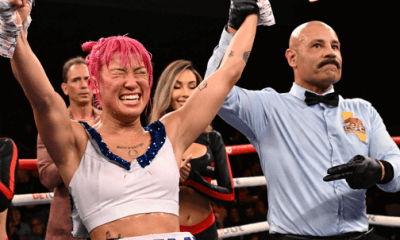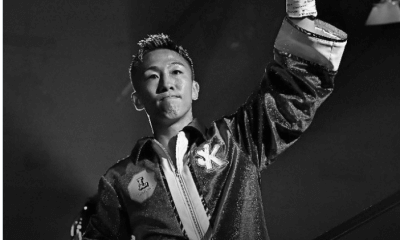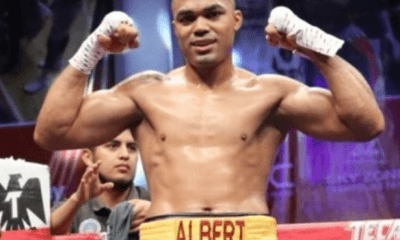Featured Articles
Frank Erne Enters the Boxing Hall of Fame, a Well-Deserved Honor
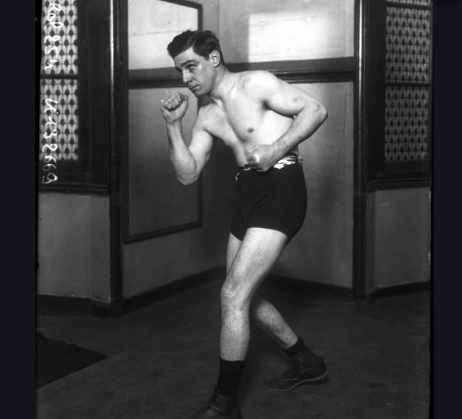
Former featherweight and lightweight champion Frank Erne was back in the news last week with the announcement that he is entering the International Boxing Hall of Fame. Erne and the other members of the newest class will be formally enshrined on Sunday, June 14, 2020.
Mr. Erne won’t be able to attend the induction ceremony. He’s been dead since 1954. However, were he alive, he would have the satisfaction of knowing that this honor is well-deserved.
Frank Erne competed from 1892 to 1908. Of his 53 documented fights, 21 were slated for 20 rounds or more. His opponents included George Dixon, Terry McGovern, and Joe Gans, all of whom went into the Hall of Fame with the inaugural class of 1990. Dixon, a bantamweight, McGovern, a featherweight, and Gans, a lightweight, are widely considered the best of all time in their respective weight classes. Erne defeated Dixon and Gans although both turned the table in rematches.
Frank Erne becomes the first fighter born in Switzerland to enter the IBHOF. When he was six or seven years old (reports vary) his parents moved to Buffalo, New York. In his early teens, he found work as a pinsetter in a bowling alley that was part of a larger complex that included a boxing gym. An instructor there, a boxing professor as they were called back then, took Erne under his wing.
Erne had his early fights in Buffalo. In 1895, he went to New York and attracted national notice with back-to-back knockouts of Jack Skelly. A Brooklyn man, Skelly was such an outstanding amateur that there was little backlash when he was sent in against featherweight champion George Dixon in his very first pro fight (the middle fight in the three-day Carnival of Champions at New Orleans, an event climaxed by the historic fight between John L. Sullivan and James J. Corbett).
Skelly was no match for Dixon and ultimately no match for Frank Erne. Two months after their second meeting, Erne had his first of three encounters with Dixon. Their initial go was a 10-rounder that was fairly ruled a draw. The rematch was set for 20 rounds with Dixon’s title on the line.
Here’s Nat Fleischer’s post factum: “Erne proved to be in every respect a superior boxer on this occasion for he outpointed Dixon at long range, beat him decisively at in-fighting, had it all over Dixon in ring generalship, besides possessing courage and fearlessness.” The ringside correspondent for the Brooklyn Daily Eagle, more measured in his assessment, called it “one of the fiercest and cleanest fights, as well as one of the most scientific, that has ever been seen.”
Dixon had lost only twice previously, the first by disqualification and the other in a 4-round contest, and would win back his title in the rubber match, clearly out-pointing Erne in a match that went 25 rounds.
Making weight was always a problem for Frank Erne. After surrendering his title to Dixon, he moved up to lightweight and challenged George “Kid” Lavigne. They fought twice.
In their first meeting, Lavigne, the fabled “Saginaw Kid,” retained his title thanks to a generous referee who scored the fight a draw, but justice was served in the rematch which was staged at an outdoor arena on the outskirts of Buffalo on the day preceding the Fourth of July,1899. Despite injuring his hand in the seventh frame, Erne gave Lavigne a good drubbing and had his hand raised at the conclusion of the 20-round match. He now had the distinction of winning world titles in two separate weight classes.
Erne first met Joe Gans in March of 1900 when Gans was still in his prime. The match, slated for 25 rounds, ended in the 12th when Gans suffered a terrible injury to his left eye – some reports say the eye was knocked out of its socket – from an accidental clash of heads. The referee ruled that Gans was at fault and awarded the contest to Erne. Based on newspaper reports, that was a fair adjudication as Erne, the defending champion, had all the best of it, leaving Gans in great distress at the end of the previous round.
Gans avenged the defeat 26 months later, knocking out Erne in the opening round at Fort Erie, Ontario, Canada, across the Niagara River from Buffalo. Erne’s unrelenting battle with the scales had finally caught up with him.
Erne retired the following year, but returned five years later and had one more fight, winning a 10-round decision in Paris over British veteran Curly Watson in a fight billed for the welterweight championship of France. He remained in the French capitol for some time thereafter, working as a boxing instructor and promoting a few fights before returning to the United States and taking up residence in New York City.
Unlike most of his contemporaries, Frank Erne was no fool with his money, but the stock market crash of 1929 dealt him a severe blow and he was forced to seek regular employment. He became a salesman for a fuel company.
Erne won’t be around for his formal IBHOF induction, but he wasn’t completely forgotten in his dotage. On Jan. 9, 1951, the day after his 76th birthday, he received a special award at the silver anniversary dinner of the Boxing Writers Association, a gala affair held in the posh Starlight Room of the Waldorf-Astoria with entertainment provided by Jimmy Durante and other nightclub headliners.
Erne wasn’t honored only for his in-ring exploits, but for his good character. During World War II and again during the Korean War, it was common for famous boxers of yesteryear to visit wounded soldiers in VA hospitals and regale them with stories from their fighting days to boost their spirits. Frank Erne, although he had some infirmities, was especially active in this regard, “indefatigable” said New York Times sports editor Arthur Daley.
Frank Erne, it says here, is a worthy addition to the International Boxing Hall of Fame. Kudos to the electors who placed him on their ballot.
Check out more boxing news on video at The Boxing Channel
To comment on this story in The Fight Forum CLICK HERE
-

 Featured Articles3 weeks ago
Featured Articles3 weeks agoThe Hauser Report: Zayas-Garcia, Pacquiao, Usyk, and the NYSAC
-

 Featured Articles2 weeks ago
Featured Articles2 weeks agoOscar Duarte and Regis Prograis Prevail on an Action-Packed Fight Card in Chicago
-

 Featured Articles1 week ago
Featured Articles1 week agoThe Hauser Report: Cinematic and Literary Notes
-

 Book Review5 days ago
Book Review5 days agoMark Kriegel’s New Book About Mike Tyson is a Must-Read
-
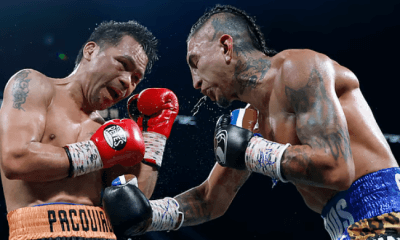
 Featured Articles4 weeks ago
Featured Articles4 weeks agoManny Pacquiao and Mario Barrios Fight to a Draw; Fundora stops Tim Tszyu
-
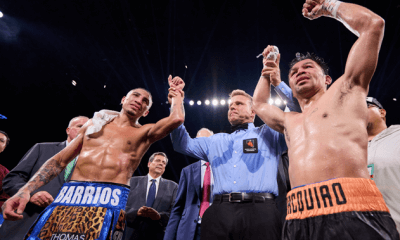
 Featured Articles4 weeks ago
Featured Articles4 weeks agoArne’s Almanac: Pacquiao-Barrios Redux
-

 Featured Articles3 weeks ago
Featured Articles3 weeks agoRemembering Dwight Muhammad Qawi (1953-2025) and his Triumphant Return to Prison
-
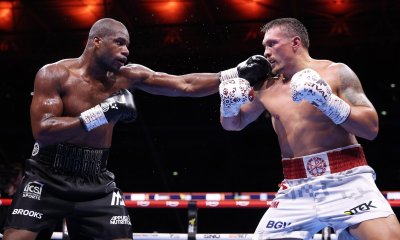
 Featured Articles4 weeks ago
Featured Articles4 weeks agoOleksandr Usyk Continues to Amaze; KOs Daniel Dubois in 5 One-Sided Rounds


